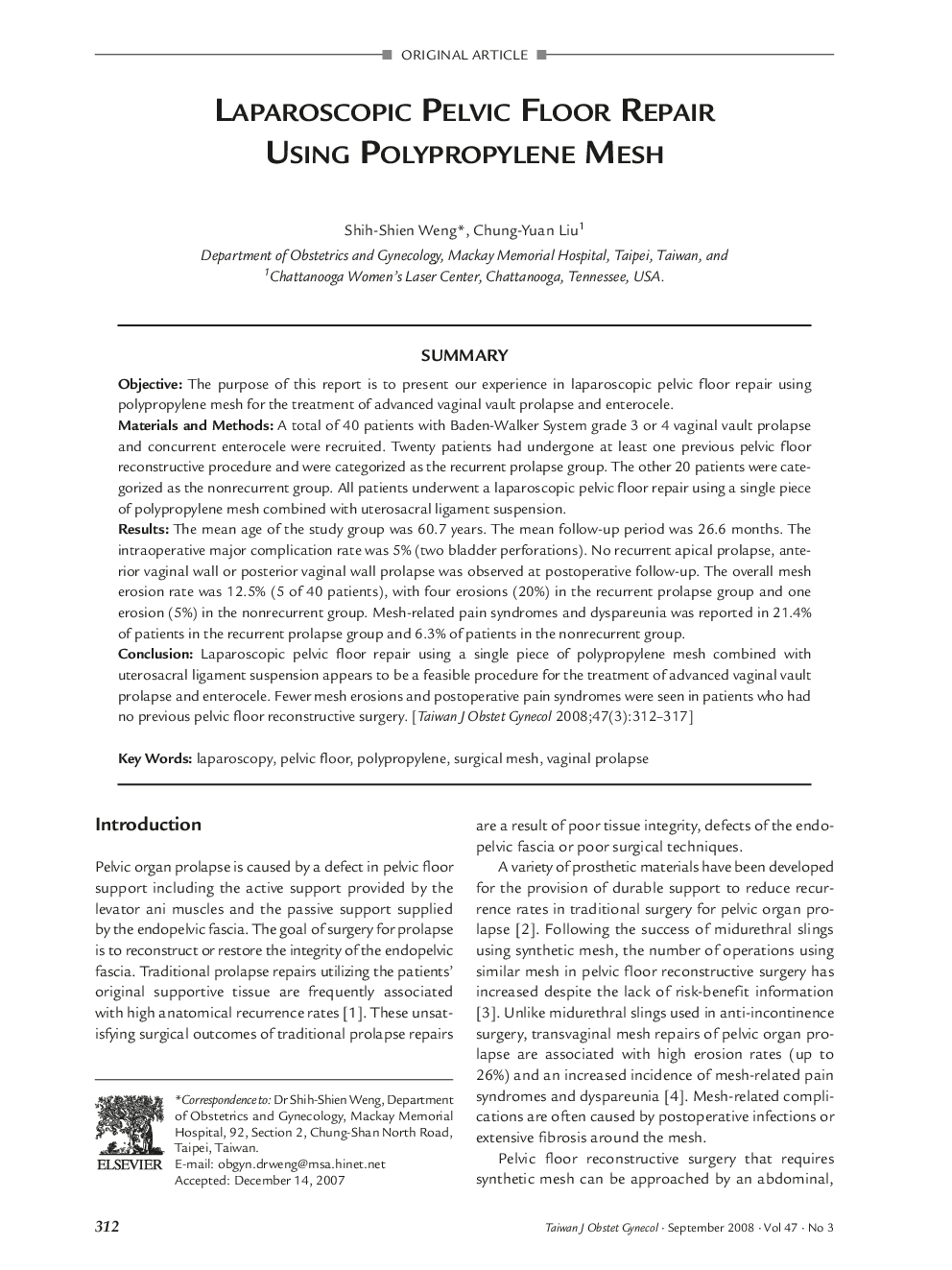| Article ID | Journal | Published Year | Pages | File Type |
|---|---|---|---|---|
| 3975945 | Taiwanese Journal of Obstetrics and Gynecology | 2008 | 6 Pages |
SummaryObjectiveThe purpose of this report is to present our experience in laparoscopic pelvic floor repair using polypropylene mesh for the treatment of advanced vaginal vault prolapse and enterocele.Materials and MethodsA total of 40 patients with Baden-Walker System grade 3 or 4 vaginal vault prolapse and concurrent enterocele were recruited. Twenty patients had undergone at least one previous pelvic floor reconstructive procedure and were categorized as the recurrent prolapse group. The other 20 patients were categorized as the nonrecurrent group. All patients underwent a laparoscopic pelvic floor repair using a single piece of polypropylene mesh combined with uterosacral ligament suspension.ResultsThe mean age of the study group was 60.7 years. The mean follow-up period was 26.6 months. The intraoperative major complication rate was 5% (two bladder perforations). No recurrent apical prolapse, anterior vaginal wall or posterior vaginal wall prolapse was observed at postoperative follow-up. The overall mesh erosion rate was 12.5% (5 of 40 patients), with four erosions (20%) in the recurrent prolapse group and one erosion (5%) in the nonrecurrent group. Mesh-related pain syndromes and dyspareunia was reported in 21.4% of patients in the recurrent prolapse group and 6.3% of patients in the nonrecurrent group.ConclusionLaparoscopic pelvic floor repair using a single piece of polypropylene mesh combined with uterosacral ligament suspension appears to be a feasible procedure for the treatment of advanced vaginal vault prolapse and enterocele. Fewer mesh erosions and postoperative pain syndromes were seen in patients who had no previous pelvic floor reconstructive surgery.
